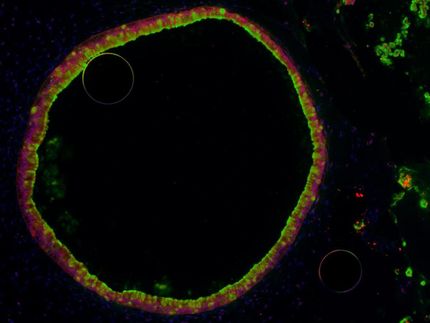Metabolism, Maths, Medicine: If Bacteria Were Calculable
For the first time, researchers at the Helmholtz Centre for Infection Research (HZI) have produced a comprehensive model of the metabolic processes of the bacterium Pseudomonas aeruginosa. With this, the basis is created for the development of possible new therapy concepts to counteract this infectious germ. The work of the Braunschweig-based researchers also provides an indication of the direction that modern biomedicine is taking: "Today, we increasingly regard cells as an integrated, biological system," says Project Leader Dr. Vítor Martins dos Santos. "With the aid of mathematical models we are now able to partially predict the behaviour of the system and then use simulations to develop new therapy concepts."
Pseudomonas aeruginosa lives almost everywhere. In water, in the soil, on and in us, and in hospitals. The microbe is especially problematic here, as it can attack and render ill patients with immune deficiency in particular. "Bacteria that exist everywhere naturally have a highly variable metabolism, which makes them extremely flexible," says Martins dos Santos. The talk is of a metabolic convertibility. In the case of Pseudomonas this is based upon a genome that is very large for bacteria. Martins dos Santos: "This means that the bacterium is very robust, versatile and reproduces quickly."
The genome of the Pseudomonas strain PAO1 was already completely sequenced in 2000. However, mere knowledge of the precise sequence of the DNA constituents in genetic material does not make germs truly susceptible to newly synthesised antibiotics or other therapeutic approaches. Genes supply the basis for the construction plans for a cell but only make a limited statement with regard to its biological implementation. "We need to know what individual triggers there are for genetic activity and whether their products such as certain enzymes have an effect in cell metabolism. And we need to know this for each time point and each position of the metabolism," states Martins dos Santos. Consequently, he does not only asks what role an enzyme plays in cell metabolism, he really wants to know how it embedded in a the whole metabolic network and whether he can discover it in the rhythm of the cell cycle - he quantifies.
Vítor Martins dos Santos and his team, together with collaborators at the University of Virginia, therefore investigated which functions and reactions can be directly or indirectly influenced by an enzyme or other genetic products. When the HZI researchers had discovered this for all genetic products, they depicted the processes in the form of a network. This is known as a so-called genome-based, metabolic network.
"Thus, we represented the data of a large bacterial genome in the form of a metabolic network," summarises the researcher. "Now we are able to partially forecast what happens when we interfere with the metabolism of Pseudomonas here or there." These simulations should provide references for medicinal interventions, which are often scarce, in particular with regard to infections. "Research has been carried out into cells and germs for over 330 years and yet they are still a 'black box', with no-one really certain what is happening inside," says Martins dos Santos, inferring that system-biological approaches such as these will now be able to make visible what is actually going on inside the cells.
Original publication: MA Oberhardt et al; "Genome-scale metabolic network analysis of the opportunistic pathogen Pseudomonas aeruginose PAO1."; J. Bacteriol 2008.
Other news from the department science

Get the life science industry in your inbox
By submitting this form you agree that LUMITOS AG will send you the newsletter(s) selected above by email. Your data will not be passed on to third parties. Your data will be stored and processed in accordance with our data protection regulations. LUMITOS may contact you by email for the purpose of advertising or market and opinion surveys. You can revoke your consent at any time without giving reasons to LUMITOS AG, Ernst-Augustin-Str. 2, 12489 Berlin, Germany or by e-mail at revoke@lumitos.com with effect for the future. In addition, each email contains a link to unsubscribe from the corresponding newsletter.
Most read news
More news from our other portals
Last viewed contents

Shining a light on quantum dots measurement

With AI and lasers to fully automated cell selection - Continuous movement versus stop-and-go process

Merck Announces Organizational Transformation of Life Science Business Sector to Strengthen CDMO Offering and Accelerate Future Growth

Electrochemistry Paves the Way: Sustainable Synthesis Method Reveals N-Hydroxy Modifications for Pharmaceuticals - Closing knowledge gaps - new findings on heterocycles
Aterovax Signs Collaboration with Biomnis to Offer sPLA2 Activity Testing in Pharmaceutical Clinical Research
Medicago awarded $21 million from the U.S. Department of Defense - Medicago to develop a vaccine facility in Research Triangle Park, North Carolina

Analytica Vietnam 2021 postponed from April to October - Exhibitors thus will be able to better plan their trade fair participation

Initial step of photosynthesis observed - Charge seperation in pigments with 2D electronic spectroscopy unveiled



















































